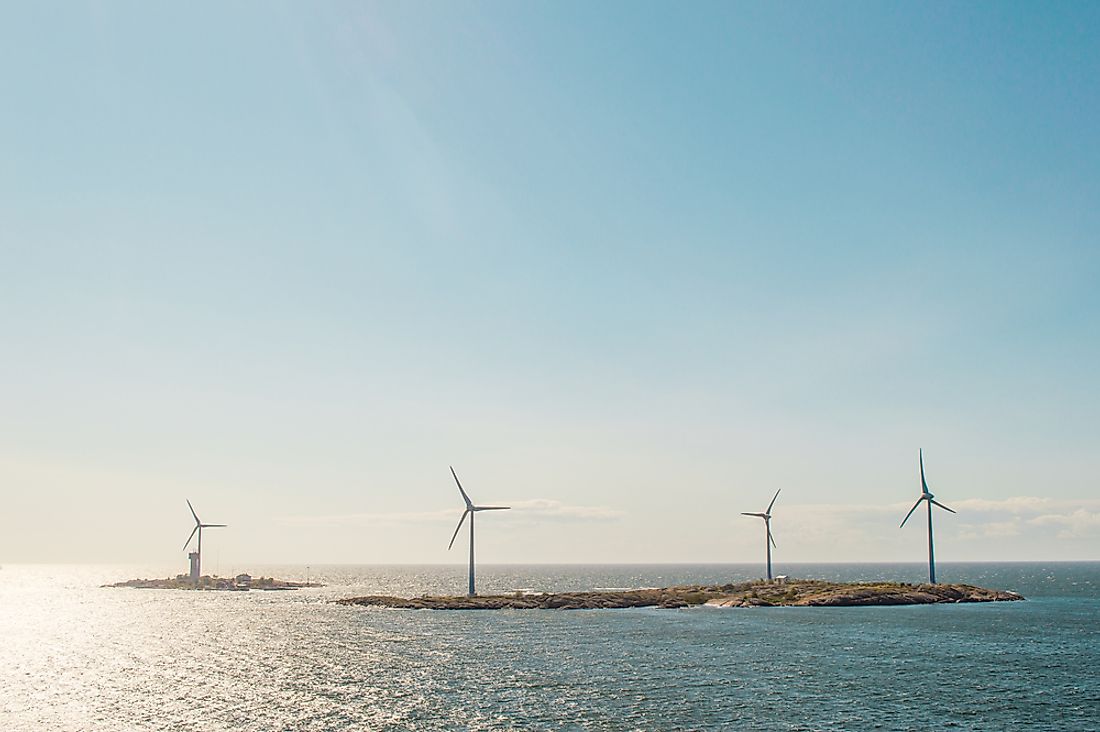14 EU Member States With The Highest Renewable Energy Rates

According to the recent report by Eurostat, the European Union has made great strides in the generation of renewable energy in the recent past, with the shares of energy generated from the renewable sources hitting 17% in 2016. The share has doubled since 2004 having recorded only 8.5%. The region aims to hit 20% by 2020 and 27% by 2030. Since 2004, the share of renewable energy has grown significantly in almost all member states. Compared to 2015, the share has increased in 15 countries. If the same momentum and campaign on the use of renewable energy are maintained, the regional block may even surpass its 2030 target.
EU Countries with the Highest Renewable Energy Rates
The Top Five Countries
Of the 28 member states, Sweden has the highest renewable energy rate. More than half (53.8%) of its energy was generated from renewable sources in 2016. Sweden has consistently recorded an upward growth in gross final energy consumption from renewable sources since 2004 when it recorded 38.7%. The country targets to achieve a target of 49% in 2020. Finland is a distance second, consuming 38.7% of energy from the renewable source. In 2004, only 29.2% of the energy consumed in Finland was generated from renewable sources with the country aiming for 38% renewable energy share by 2020.
Latvia, Austria, and Denmark completed the top five countries with the highest rate of renewable energy charge in the EU in 2016. Latvia, which aims to utilize 40% of renewable energy from renewable sources, consumed 37.2% of energy from renewable sources while Austria and Denmark accounted for 33.5% and 32.2% respectively. With renewable energy accounting for only 14.9% of energy consumed in 2004, Denmark is one of the countries that have significantly adopted the use of renewable energy over the years. It now aims to achieve 30% by 2020.
Countries with a Share of 25-30% of Renewable Energy
Estonia, Portugal, Croatia, Lithuania, and Romania fall in the categories of countries whose share of renewable energy was between 25 to 30% in 2016. The share of renewable energy consumed for the former three countries was 28.8%, 28.5%, and 28.2% respectively compared to18.4%, 19.2%, and 23.5% respectively in 2004. The three countries aim to achieve a share of 25%, 30%, and 21% respectively. In Lithuania and Romania, renewable energy accounted for approximately 25%, with the countries targeting a share of 23% and 24% respectively.
Other Top Consumers
Slovenia, Bulgaria, Italy, and Spain complete the list of the 14 EU member states with the highest renewable energy rates. Having achieved a share of 21.3%, Slovenia aims to increase the share of renewable energy resource to 25% in 2020. Bulgaria, Italy, and Spain achieved less than 20% in 2016 and are aiming at 16%, 17%, and 20% respectively.
Definition of Renewable Energy
Sources or renewable energy include solar, hydro, geothermal, wind, and biomass. The numerator of the indicator is the amount of energy delivered to the final consumer while the denominator is the final energy consumption from all the renewable sources. Imported or exported electricity is not included as renewable energy unless an agreement has been signed between government like as in the case of Sweden and Norway.
14 EU Member States With The Highest Renewable Energy Rates
| Rank | Country | % of Energy from Renewable Sources (2016) | Target % of Energy from Renewable Sources (2020) |
|---|---|---|---|
| 1 | Sweden | 53.8 | 49 |
| 2 | Finland | 38.7 | 38 |
| 3 | Latvia | 37.2 | 40 |
| 4 | Austria | 33.5 | 34 |
| 5 | Denmark | 32.2 | 30 |
| 6 | Estonia | 28.8 | 25 |
| 7 | Portugal | 28.5 | 31 |
| 8 | Croatia | 28.3 | 20 |
| 9 | Lithuania | 25.6 | 23 |
| 10 | Romania | 25.0 | 24 |
| 11 | Slovenia | 21.3 | 25 |
| 12 | Bulgaria | 18.8 | 16 |
| 13 | Italy | 17.4 | 17 |
| 14 | Spain | 17.3 | 20 |











